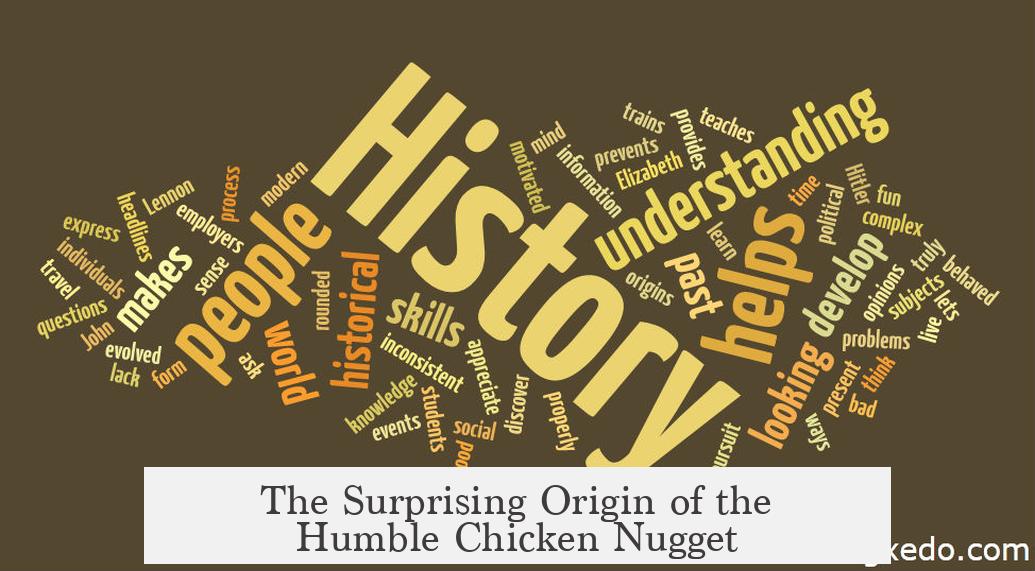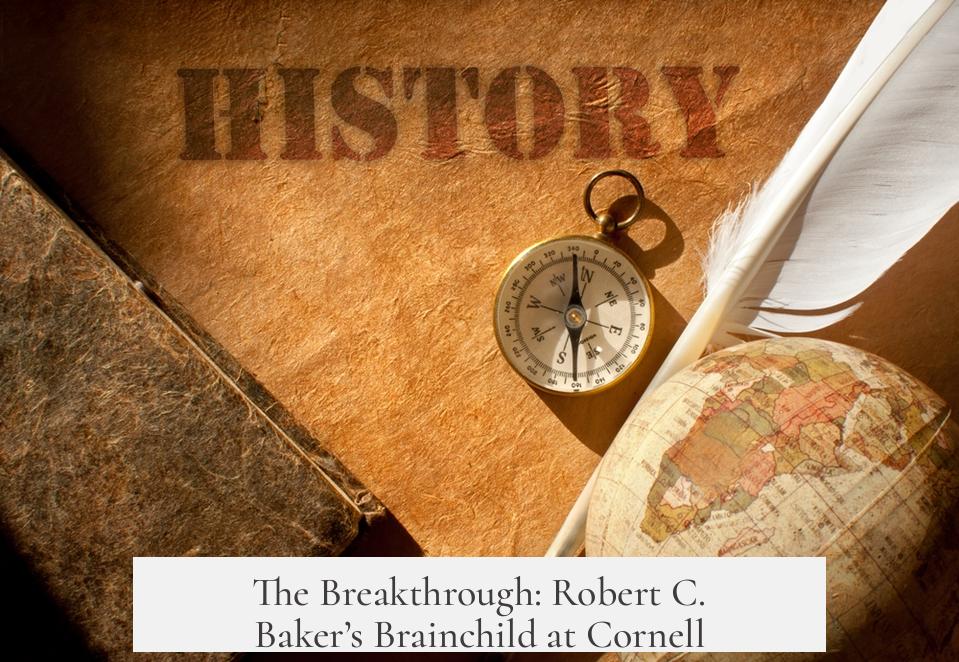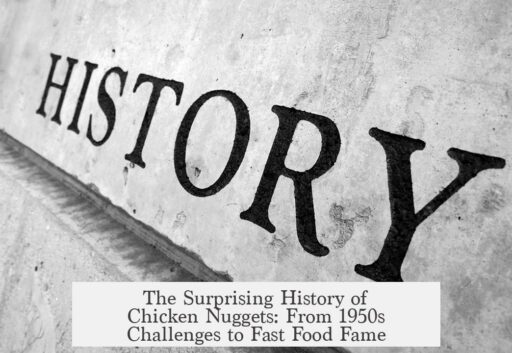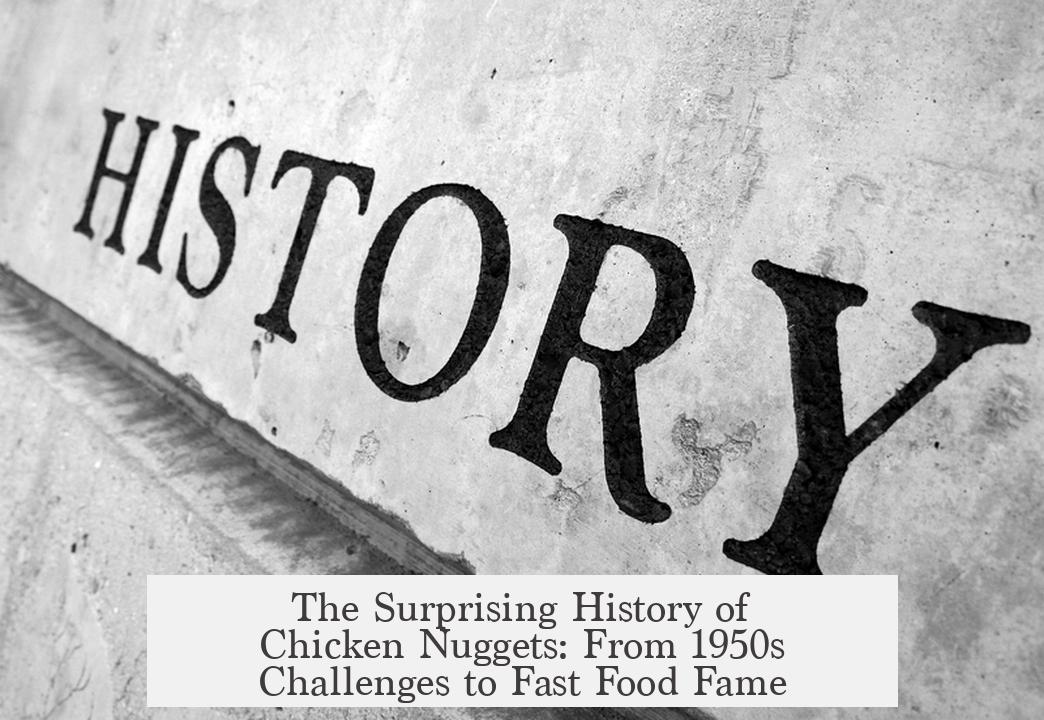The humble chicken nugget originates from a 1960s innovation at Cornell University, designed to add value to poultry products during a time of excess chicken supply and shifting consumer demands in America.
In the 1950s and 1960s, the U.S. poultry industry faced a challenge known as the Broiler Depression. The industry had grown so efficient that by 1955 it produced over 1 billion birds, causing chicken prices to drop as supply exceeded demand. Consumers, limiting chicken consumption to about once a week, saw chicken as a cheap, low-status meat. Unlike beef and pork, chicken had no processed convenience products commonly available for quick meals. This gap made it difficult for producers to increase sales, especially with Grade B broilers, which had inferior appearance and were hard to market. Additionally, egg producers struggled with declining egg consumption and sought new processed egg and spent-layer meat products.
At Cornell University, Robert C. Baker, a former poultry extension agent, and his team stepped in during the late 1950s and early 1960s to develop new poultry and egg products. Their goal was to create convenient, processed foods appealing to consumers, especially working women seeking quick meal solutions. Among their innovations were Bake and Serve Chicken Loaf (1962), Chicken Franks (1961), and notably Chicken Sticks (1963), which represent the original chicken nuggets.
The Chicken Sticks product was a cohesive ground chicken meat item designed to withstand freezing and frying without breaking apart, thanks to a special binder and batter. The recipe was published in 1963 by J.H. Marshall, a Cornell student, after multiple trials to perfect it. Its preparation involved grinding deboned chicken, mixing it with cereal binder, non-fat dry milk, seasoning, salt, water, vinegar, and then shaping, freezing, battering, breading with cornflake crumbs, and packaging. This product was tested and marketed locally in New York, receiving positive sales results even without advertising.
| Key Ingredients per 90 lbs Chicken Portion | Amount |
|---|---|
| Cereal binder | 1 lb. 13 oz. |
| Non-fat dry milk | 4 lbs. 8 oz. |
| Seasoning | 10 1⁄2 oz. |
| Salt | 21 oz. |
| Water | 3 3⁄4 qts. |
| Vinegar (5% acidity) | 28 oz. |
| Flour (batter) | 4 lbs. |
| Whole eggs (batter) | 3 lbs. |
| Corn flake crumbs (coating) | 13 lbs. |
In 1967, the National Broiler Council launched a national campaign to promote chicken nuggets and other innovative poultry products. They targeted media and educational organizations, encouraging homemakers to try these novel foods. Media outlets published recipes and positive reviews. This campaign increased interest among processors and retailers, though processed chicken products still accounted for a small market share by 1970 (~4%). Early chicken nuggets appeared on restaurant menus by the late 1960s and early 1970s, but mass-market penetration was limited.
The breakthrough came in 1980 when McDonald’s introduced Chicken McNuggets. The company aimed to respond to declining red meat sales and health concerns. After several product trials, executive chef René Arend developed a nugget-sized chicken product that McDonald’s could automate. The launch in Knoxville, Tennessee was an instant hit, making chicken nuggets a permanent staple and dramatically increasing their popularity worldwide.
Despite McDonald’s success, they did not credit Robert C. Baker or Cornell’s earlier work. Nevertheless, the invention of chicken nuggets reflects the combined efforts of the poultry industry and fast-food companies to add value to chicken products through innovative processing and marketing strategies.
- Chicken nuggets originated in the early 1960s at Cornell University by Robert C. Baker.
- They addressed surplus chicken production and consumer demand for convenience foods.
- Original nuggets were known as Chicken Sticks and used special binders and coatings.
- A 1967 campaign by the National Broiler Council helped promote nuggets nationally.
- McDonald’s mass popularized Chicken McNuggets in 1980, transforming the market.
- The nugget’s success combines academic innovation and fast-food industrialization.
The Surprising Origin of the Humble Chicken Nugget

Ever wondered where chicken nuggets came from? It’s a question few pause to ask amid the frenzy of dipping sauces and crunchy bites. Yet, the story is fascinating and surprisingly modern. The humble chicken nugget, as we know it today, owes its existence to innovation forged in the 1960s poultry industry, not some fast-food chain kitchen.
Now, let’s unwrap this savory history from the beginning. Why did anyone bother to create these bite-sized bird treats in the first place?
The Challenge in the 1950s and 60s: Too Much Chicken, Too Little Appeal
Back in the 1950s, America hit a poultry production boom. By 1955, a staggering 1 billion broiler chickens were raised in the US. With so much supply, prices plummeted. Chicken shifted from a gourmet luxury to a cheap, everyday item. Consumers, however, hit their chicken quota, refusing to eat it more than once a week.
And here’s a kicker: chicken was only sold in very basic forms—whole, halved, or cut-up parts. Unlike beef and pork, there were no convenient processed chicken foods to make life easier for busy Americans. Women increasingly worked outside the home and favored quick, no-fuss meals. Chicken’s lack of processed, ready-to-eat forms left it struggling.
Plus, there was the pesky issue of “Grade B broilers” — chickens that looked less than perfect. These birds had tougher meat and didn’t sell well. The industry faced a real conundrum: tons of chicken but not enough ways to make it appealing or convenient.
Rising Egg and Poultry Issues
The egg sector wasn’t riding the gravy train either. Egg consumption dropped, partly out-shined by red meat’s popularity. And like chicken, eggs lacked processed, easy-to-use products for the modern kitchen. Egg producers sought ways to boost value from spent layers—the older hens whose meat was less wanted as people gravitated towards quick meals.
Both broiler and egg producers needed innovation to unlock new value. This triggered a quest to create processed poultry products that consumers wanted and could easily prepare.
The Breakthrough: Robert C. Baker’s Brainchild at Cornell

Enter Robert C. Baker, a poultry extension agent turned Cornell University food scientist. Starting in the late 1950s, Baker took on the challenge headfirst. His lab produced an array of poultry and egg products, backed by rigorous testing: taste panels, family consumer trials, shelf-life studies. This was serious R&D work, not mere kitchen experiments.
Baker’s team innovated several products from spent layer meat, including chicken loafs, sausages, rolls—basically a poultry product line designed to revolutionize convenience foods. But the star creation was “Chicken Sticks,” the direct ancestor of today’s chicken nuggets.
First published in 1963 by Baker’s student J.H. Marshall, Chicken Sticks were ground chicken meat formed into cohesive sticks. Thanks to a special binder and cornflake crumb batter, these sticks could be frozen, fried, and still hold together perfectly. That was crucial: no chef or mom wants their nuggets disintegrating in hot oil.
| Ingredient | Amount |
|---|---|
| Ground raw chicken | 90 lbs. |
| Cereal binder | 1 lb. 13 oz. |
| Non-fat dry milk | 4 lbs. 8 oz. |
| Seasoning | 10 1⁄2 oz. |
| Salt | 21 oz. |
| Water | 3 3⁄4 qts. |
| Vinegar (5% acidity) | 28 oz. |
| BATTER MIX | |
| Flour | 4 lbs. |
| Whole Eggs | 3 lbs. |
| Seasoning | 4 oz. |
| Water (to make batter) | 2 gallons |
| Corn flake crumbs | 13 lbs. |
The process was scientific and precise. Chicken was ground and combined with binders and seasonings, shaped, frozen, dipped in batter, and coated in cornflake crumbs. The crunchy coating wasn’t just for taste—it also made the product visually appealing and helped it resist stickiness.
Early Testing and Marketing: The 1967 National Broiler Council Campaign
By 1967, industry efforts ramped up. The National Broiler Council (NBC) launched a nationwide push to popularize these new convenience foods, including “Quick Chick” strips, chicken nuggets, and “Swingin’ Wings.”
Media outlets jumped onboard, printing recipes, consumer testimonials, and cooking tips. Nugget products got spotlight articles about their delicious taste and quick preparation. This campaign aimed to reframe chicken as not only affordable but also a modern and versatile food.
Even restaurants started offering chicken nuggets by the late 1960s. However, in retail markets, nuggets and similar processed chicken products held only about 4% of market sales by 1970. The convenience food revolution was stirring but had not yet swept the nation.
McDonald’s Nuggets: The Fast Food Game-Changer in 1980
The mass popularity of chicken nuggets truly skyrocketed in 1980, thanks to McDonald’s. Facing slumping sales in the late 1970s as customers fretted over red meat and heart health, McDonald’s sought a tasty, healthier alternative.
Chairman Fred Turner tasked executive chef René Arend to create a chicken-based product that matched the speed and convenience McDonald’s demanded. After experimenting on “onio nuggets” and other prototypes, Arend nailed the chicken nugget recipe.
McDonald’s fast-tracked the product’s launch. In March 1980, Chicken McNuggets debuted in Knoxville, Tennessee, and were an instant hit. Suddenly, chicken nuggets were no longer a niche product but a fast-food staple.
Following McDonald’s success, poultry companies jumped on the value-added processed chicken bandwagon. By 1988, these products accounted for 20% of market sales, a remarkable rise from less than 5% a decade earlier.
The Unsung Heroes and Recognition

Surprisingly, McDonald’s official story doesn’t credit Robert Baker or the National Broiler Council for sparking the chicken nugget innovation. Yet, it was Baker’s meticulous research and product development at Cornell that birthed the concept.
McDonald’s genius lay in scaling production, perfecting automation, and deploying nuggets on a vast restaurant footprint. Both Cornell’s innovation and fast food’s industrial strength combined to etch chicken nuggets into global cultures.
What Can We Learn from This Peckish Tale?
Chicken nuggets teach us simple but vital lessons about innovation and market need. The poultry industry faced a product glut and consumer boredom. Researchers responded with creativity, turning otherwise discarded chicken pieces into tasty, convenient snacks.
Doves fled; chickens rose. The convenience food wave met evolving lifestyles, matching working families’ demand for fast meals. Then, industrial powerhouses like McDonald’s amplified the impact, proving the marriage of invention and distribution is crucial.
Tips for Aspiring Food Innovators
- Identify real, pressing market problems. Oversupply, changing diets, consumer habits—all these create space for innovation.
- Invest in hard science. The Chicken Sticks success came from precise recipes, binders, taste panels, and shelf tests—not guesswork.
- Collaborate with industry stakeholders. Baker invited companies to explore licensing and production, showing openness to scale ideas.
- Don’t underestimate marketing. The NBC’s 1967 campaign brought nuggets into the spotlight; forget marketing, and the best product stays hidden.
- Leverage mass distribution channels. McDonald’s system made nuggets a household staple—reminding us that reach often matters as much as invention.
In Conclusion: More Than Just a Fried Snack
Chicken nuggets carry a history deeper than their golden brown crusts. The next time you dip one into your favorite sauce, remember: you’re biting into a legacy of industry challenges, scientific rigor, marketing savvy, and fast-food ingenuity.
Would your chicken nugget taste as good without Robert Baker’s binders or René Arend’s fast food prowess? Probably not.
So, the next time a chicken nugget disappears with a satisfying crunch, tip your hat to the American poultry pioneers who dreamed, tested, and fried their way into history.
What problem led to the invention of chicken nuggets in the 1960s?
The poultry industry produced too much chicken, causing prices to drop. Consumers ate chicken rarely, and there were no convenient chicken products like for beef or pork. This pushed researchers to find new processed chicken foods.
Who invented the chicken nugget and where?
Robert C. Baker, a researcher at Cornell University, invented chicken nuggets in the early 1960s. He and his team developed new poultry products to add value and improve chicken sales.
What was the original name and form of chicken nuggets?
Chicken nuggets were first called “Chicken Sticks.” They were cohesive ground chicken pieces coated in batter and cornflake crumbs, designed to freeze well and cook without falling apart.
How were the original chicken nuggets developed and tested?
Baker’s team tested the nuggets for taste with women and families, checked shelf life, packaging, and market appeal. They also provided full recipes and processing details to food manufacturers.
What ingredients were used in the first chicken nugget recipe?
The recipe included ground chicken, cereal binder, dry milk, seasonings, egg batter, and cornflake crumbs. The process involved grinding meat, mixing ingredients, shaping, freezing, battering, and coating.
How did the National Broiler Council help popularize chicken nuggets?
In 1967, they ran a campaign promoting quick-cooking boneless chicken strips. This helped introduce processed chicken items like nuggets to homemakers, boosting chicken’s market appeal.




